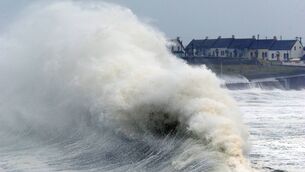China’s largesse is its road to domination

Property values have moved on since Dutchman Peter Minuit bought Manhattan Island from unnamed Native Americans for 60 guilders in 1626.
They have moved on too since, in 1867, America bought Alaska from Russia for $7.2m. That oil — just oil — generated $2.4bn for Alaska last year shows what a good investment, in economic terms at least, that 1867 deal was.
Spectacular as those deals were they are insignificant compared to the tsunami of Chinese investment sweeping the world, particularly in poor, African countries.
Since the turn of the century the Chinese government, banks or contractors have lent $143bn in Africa. Very often these loans are to fund projects which are, as often as not, delivered by Chinese companies.
Circular, self-perpetuating capitalism at its ensnaring best.
Angola is the top recipient, with $42.8bn disbursed over the past 17 years, followed by Ethiopia, Kenya, and the Republic of the Congo, with $13.7bn, $9.8bn, and $7.4bn respectively. Since 2015, Beijing has lent more than $68.7bn to African governments, according to the China-Africa Research Initiative (CARI) at Johns Hopkins University.
“Africa’s debt to China is becoming more of a concern moving forward,” said Janet Eom, associate researcher at CARI.
Germany’s think tank the Kiel Institute for the World Economy reports that between 2000 and 2017, other countries’ debt to China soared ten-fold, from less than $500bn to more than $5trn. For 50 developing countries indebted to China, that debt has increased on average from less than 1% of their GDP in 2015, to more than 15% in 2017, according to estimates by the institute.
Any discomfort the West might feel at this exercise of real, world-changing power dressed as soft power must be tempered. Since African countries secured independence they struggled to secure loans from former colonial masters, World Bank or International Monetary Fund. China saw the opportunity and filled the vacuum.
To secure borrowings Beijing’s deals include access to minerals, raw materials or the profits of state-owned companies.
As any of the 40,000 people trapped in our tracker mortgages scandal will confirm, a loan is empowering until it is not. Once difficulties arise the dynamic changes.
Governments from Malaysia to Pakistan are reviewing the costs of projects funded by China. Sri Lanka, where the government leased a port to a Chinese company for 99 years after struggling to make repayments, seems a cautionary tale.
Most of these projects come under the umbrella of China’s grand strategy: the huge, ever-expanding Belt and Roadproject which now includes 71 countries from South-east Asia to Eastern Europe, and Africa, that account for half the world’s population and a quarter of global GDP.
And hardly a shot fired.
















